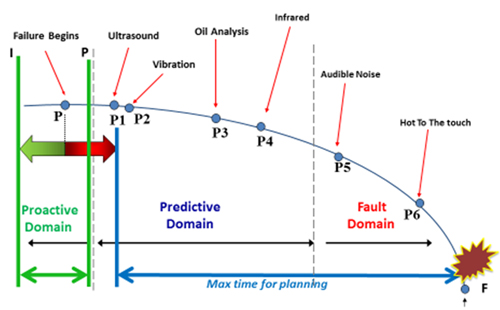How are sensors used in predictive maintenance?
Predictive maintenance (PdM) typically uses data from sensors that monitor various conditions on equipment. As sensors collect data, algorithms analyze that data to predict when maintenance work will be needed.
Types of sensors used in PdM
For the process of collecting data, facilities can use various types of sensors. Some of these include:
- Vibration analysis, which is most often used on rotating machinery.
- Ultrasound analysis, which uses sound to identify potential issues with equipment.
- Infrared analysis, which is used on equipment where temperature is a good indicator of issues.
Each of these types of sensors collects data readings used in PdM.
Sensors, data collection, and condition monitoring
The readings collected by sensors may be logged into a CMMS or other form of software. Whenever those readings become abnormal, it’s a sign that things aren’t quite right.
Different types of readings may indicate different problems. For instance, a certain amount of vibration in one part of a turbine may indicate worn bearings, whereas other readings might mean there’s an imbalance or loose part. The point is when the readings from the sensors reach a certain threshold, it triggers a work order.
This is the basic premise of condition-based maintenance. However, PdM takes this a step further.
Predictive maintenance using sensors
Predictive maintenance not only uses sensors to monitor the current state of an asset, but it also involves following trends to predict when issues might develop in the future. If a certain trend in measurements from your sensors indicates a future problem, you can schedule maintenance to prevent that problem from developing.
For instance, if a mixer tends to exhibit slightly more vibration than normal a week before the bearings need lubrication, a model of the data from the sensors will show that. From there, a work order can be created in advance to make sure the bearings are oiled at the right time.

Summing up the process
To sum up the process:
- Sensors collect data from assets.
- Software (such as a CMMS) logs and tracks that data.
- Trends in the data predict when certain maintenance tasks will be necessary.
- A PdM work order is created when certain parameters are met.
Want to keep reading?
The 6 Sensors for Predictive Maintenance That Optimize Repair Timelines
What are common use cases for using a voltage sensor in predictive maintenance?
What are common use cases for using a vibration sensor in predictive maintenance?
4,000+ COMPANIES RELY ON ASSET OPERATIONS MANAGEMENT
Leading the Way to a Better Future for Maintenance and Reliability
Your asset and equipment data doesn't belong in a silo. UpKeep makes it simple to see where everything stands, all in one place. That means less guesswork and more time to focus on what matters.

![[Review Badge] Gartner Peer Insights (Dark)](https://www.datocms-assets.com/38028/1673900494-gartner-logo-dark.png?auto=compress&fm=webp&w=336)
